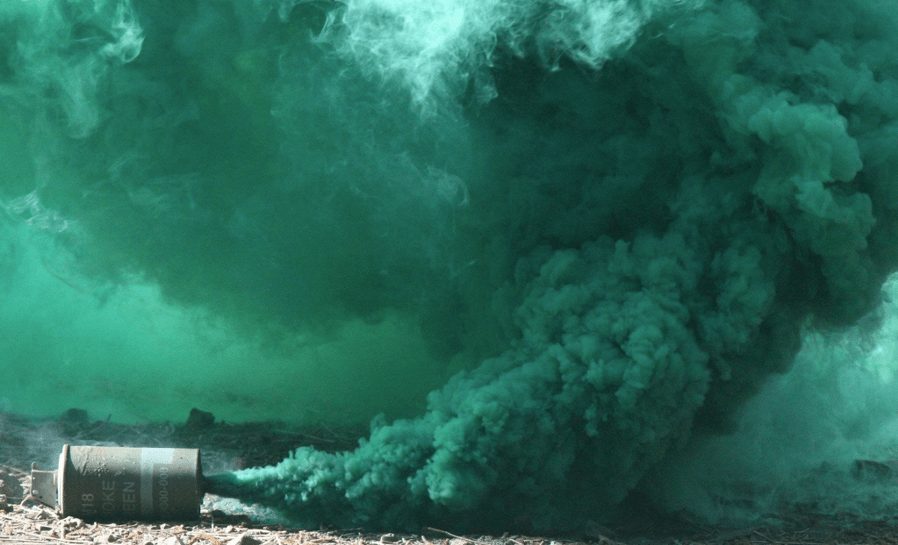
I spent the majority of my tour in Vietnam flying in the 60th Assault Helicopter Company [AHC], callsign “Ghostriders,” under the 7th Squadron -17th Air Cavalry, a composite unit. We had around 25 “slicks,” which is what we called our lift UH-1H
Hueys that carried troops and cargo, plus a gunship section of six AH-1G Cobra attack helicopters, the “Gunrunners.”
Our mission was to provide helicopter support to the Republic of Korea [ROK] White Horse and Tiger Divisions. Our company was configured for combat assault
operations, where we inserted or extracted ground troops in landing zones, under gunship cover. However, the majority of our missions were direct combat support, what we called “ash and trash,” usually routine single ships supplying troops in the field with food, ammunition, water and mail. We got a lot of flying time on these missions, since they typicallylasted eight hours or more, with several dozen individual sorties. Occasional missions included medical evacuation of wounded troops, and aerial reconnaissance for upcoming operations. From time to time on all our missions, the bad guys took offense at our presence, and indicated their displeasure with gunfire, usually AK-47. The ones shooting at me were mostly bad shots.
The aircraft crew consisted of two aviators and two enlisted crew. The Aircraft Commander was an experienced and battle-tested pilot who usually flew in the left seat, and his “charlie-pop,” or co-pilot, usually a new guy, flew in the right seat, gaining experience to become an Aircraft Commander himself one day.
In the left rear well, or cabin corner, sat the crew chief, who was the owner of the helicopter, in charge of its maintenance, who always flew with his bird. In the right well sat the door gunner, who assisted the crew chief and was responsible for the machine guns. Both the crew chief and the door gunner had pedestal-mounted M-60 machine guns, each with an ammo can holding a belt of 1,500 rounds. Their duties were to watch for enemy fire and to advise the pilots about the tail rotor in tight spaces. On direct combat support operations, we also carried an English-speaking ROK soldier, who relayed to us our missions.
Since our airfield was located just a couple of miles inlandfrom the South China Sea, whenever we took off in the morning for a mission, the first thing we did was to fly “feet wet” (over the ocean), where the door gunners could test-fire their weapons. Many troops volunteered to bedoor gunners just because they knew at least once each day they could fire their machine guns. On routine missions, we sometimes let cooks fly gunner on their days off, and we even had a chaplain who loved to fly and shoot the gun.
During test firing, the door gunners always wanted something to shoot at, and their favorite target was the sharks that swam near the surface in the South China Sea. Since a shark is mostly cartilage, machine-gun bullets don’t do any damage, but they surely do annoy the shark. Most sharks were small, but there was one Great White as big as our helicopter tail boom. He roamed about 200 miles up and down the coast. After I made
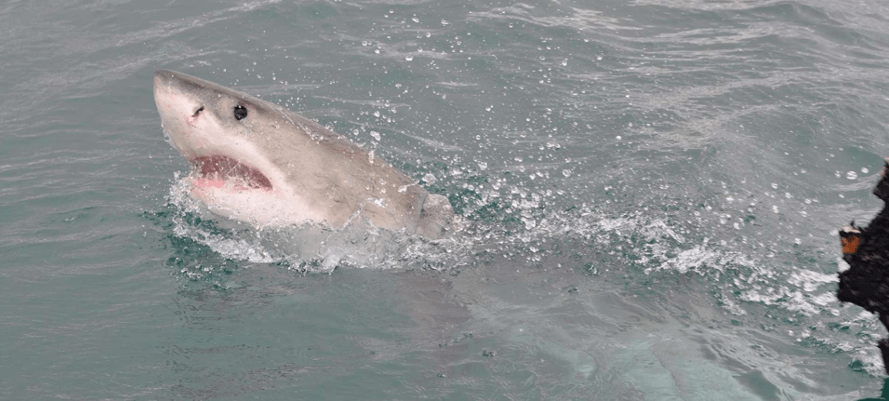
Aircraft Commander (callsign “Ghostrider 8”), I absolutely refused to let my gunners shoot that shark when we saw it. I figured if our engine quit, I did not want our crew to be breakfast for an angry giant man-eating shark.
Whenever we took fire, our crew’s priorities were to
1. Advise us where the fire was coming from.
2. Drop a smoke grenade to mark the target for the gunships.
3. And only then, return fire with the machine guns.
Our good ones could do all three simultaneously. Before the mission, they would pull the pins on smoke grenades and reinsert them backwards to hang on the edge of the ammo cans. They cruised with their little finger through the pull ring, so when they engaged with the M-60, it automatically pulled the pin and dropped the smoke.
Sometimes out horsing around at the end of a day’s mission,we would practice dropping smoke grenades from altitude to see whether we could marka specific point on the ground. The Aircraft Commander would fly straight and level and call the crew chief when to drop the smoke, then wing over to see where it went.
Early in my tour (I wasn’t present for this incident), one of our young warrant officers chose as hissmoke bombing targetan old Vietnamese fisherman out in the Tuy Hoa River, about 10 miles in from the coast. By the third smoke grenade whistling out of the sky obviously aiming for him, old papa-san finally got mad. He pulled an antiqueFrench flintlock musket out of the bottom of his boat, hung it under his arm and fired, almost knocking himself out of his boat. The Huey was pulling a steep left turn when the lucky musket ball punched through the plexiglass roof canopy and smashedthe Aircraft Commander in his helmet. The ball embedded in the Styrofoam over his forehead, but it shattered his plexiglass face shield, driving shards into his eyes. Since plexiglass doesn’t show up on X-ray, no one in-country had the technology to safely locate and remove it from his eyes, so they had to air-evacuate him to Japan to take it out.
My most memorable smoke story happened a few months into my tour. As co-pilot, or “charlie-pop, I was at the controls flying a ROK regimental commander out to inspect one of his company compounds, located on a pinnacle back in the mountains. I flew in at 2000 feet above the terrain, and when the company popped a red smoke grenade to indicate the winds at the helipad, I began my spiraling approach down to the company position. As I was rolling out at the bottom approaching touchdown, the smoke grenade ran out, so the conscientious private on helipad duty popped a fresh smoke. As I settled into a hover to touchdown, I thought to myself, “That’s strange. I’ve never seen white smoke before.”
Just as the white smoke began getting sucked into the open Huey, the Aircraft Commander screamed, “Holy shit!” and yanked the controls out of my hands to go around. I had just rememberedthat white smoke is CS, better known as tear gas. As the aircraft gained airspeed, the choking tear gas in the Huey eventually dissipated, but all aboard were coughing with teary eyes. The angry Aircraft Commander told the ROK interpreter that we were done for the day and turned back toward our base.
In a moment, the ROK came back forward and shouted over the noise, “My regimental colonel say, please, we go back.” The Aircraft Commander declared there was no way he would take us back to that company. The ROK repeated, “My commander say, please, please, please, we go back, just for one minute.”
Finally, the Aircraft Commander relented, and agreed to land us back at the pad, but this time he insisted on keeping the controls in his hands all the way. When we touched down, the colonel steppedout of our aircraft and issued a command in Korean. The ROK private who had popped white smoke snapped to attention on the pad. A moment later his sergeant appeared and came to attention beside him. A few seconds later, the lieutenant arrived and assumed the position of attention in the growing rank. Finally, the captain company commander ran up the hill, still tucking in his blouse, to join the formation.
When they were all assembled, the colonel gave another command, and all four soldiers removed their helmets and held them upside down in front of them. Another ROK soldier appeared at the commander’s side, holding the case of CS grenades. The colonel took one grenade from the case, popped it and dropped it in the helmet of the private, then sidestepped to the sergeant and did the same thing, and moved down the line, dropping a tear gas grenade in the helmets held by the lieutenant and captain.
As soon as our helicopter’s rotor wash was blowing the concentrated cloud of tear gas directly into the faces of all four of the soldiers who had displeased him, the colonel climbed back into our bird, and his interpreter told the Aircraft Commander, “We go now.”
As we lifted off, I had learned a lesson – never fly into white smoke. I’m sure the entire White Horse Division learned a variant of that very same lesson.
*Same type of aircraft flown by the Ghostriders supporting the ROK troops. Behind the soldier on the left is the right-side cabin well, post of the door gunner.

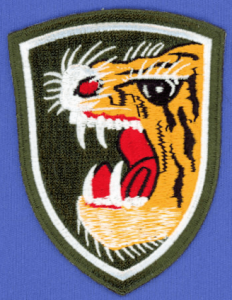
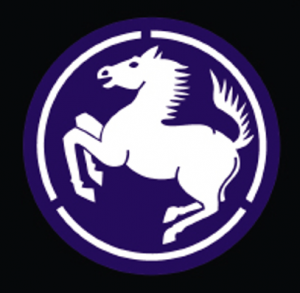
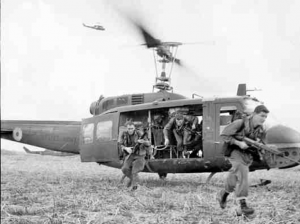
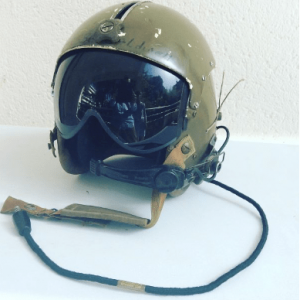
Guy, I always love your stories. As with the rest of life, war has it’s moments of weird happenings as with the musket and of mirth as well.
Another good story, Guy. I had the Deans (120th, I believe) who previously were used to ferry dignitaries around. Got to ride with them on aerial recon missions. Since things were winding down for US units then, our blade time was limited. I believe their ceiling minimum limit was 1000′ for safety reasons,but they would (unofficially) drop way below that so I could get a better look.